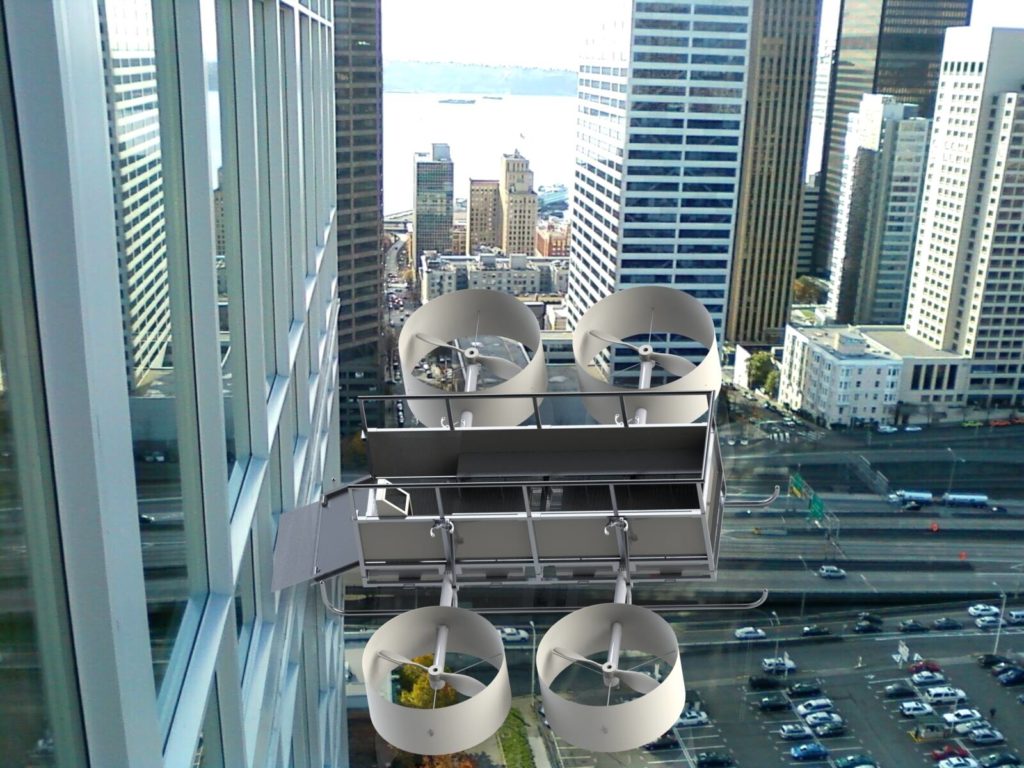A team of four former students from the Southern Alberta Institute of Technology (SAIT) were motivated by the horrific events of 9/11 to invent a flying vehicle capable of rescuing people from skyscrapers.

Team lead Nghia Vu said the terrorist attack highlighted how first responders are limited in their ways to save people trapped in high-rise buildings.
“Every city is building taller and taller structures,” Vu said.
“A ladder truck is only about 100 feet long. Helicopters can only approach from the top down… Our approach is: let’s get to the face of the building as fast as possible.”
The rest of the team consists of Jingyan Su, Thien Nguyen and Sikwon Yang.
As part of their capstone project – a culminating assignment needed to graduate – the four technologists-in-training developed the Aerial Emergency Rescue Operations Vehicle, or AERO-V.

Get daily National news
The piloted quadcopter consists of four rotors around a large platform with room for up to six people. The rotors can fold in, making for easy transport on the back of a firetruck or flatbed.
Vu said the technology needed to build the battery-powered machine is all readily available. With electrical components now better and cheaper, and with drone technology in the mainstream, the project – nicknamed Skywalker – is viable.
“It is a plausible, real solution to a global issue,” he said.
The project has already garnered plenty of attention.
It was named the SAIT Engineering Designs & Drafting Capstone Project of the Year in 2018 and has more recently been recognized by the Association of Science and Engineering Technology Professionals of Alberta (ASET).
Skywalker is a provincial finalist in ASET’s Capstone Project of the Year Awards.
“Frankly I was astounded at the level of sophistication and the importance to this project. Of doing something for public safety,” ASET CEO Barry Cavanaugh said.
“I’m absolutely certain Nghia and his team are provoking a great deal of investor interest.”
Investor interest is what Project Skywalker needs to get the AERO-V off the ground. Vu and his team hope to build a working prototype of the aircraft by the 20th anniversary of the 9/11 attacks in 2021.








Comments